“The F-4 Phantom was the last plane that looked like it was made to kill somebody. It was a beast. It could go through a flock of birds and kick out barbeque from the back.” Col. Chuck DeBellevue
The F-4 Phantom II took part in the United States Air Force (USAF) in 1963 and served as the USAF’s premier multi-role aircraft throughout the 1960s and 1970s. Bombing, combat air patrol, fighter escort, reconnaissance, and the renowned Wild Weasel anti-aircraft missile suppression missions were all carried out by the F-4.
Thousands of Navy and Marine Corps aviators also flew it.
The final variant of the renowned Phantom II, the QF-4 unmanned aerial target, flew for the last time on Dec. 21, 2016, at Holloman Air Force Base (AFB), New Mexico.
Bennie J. Davis of Airman Magazine recounts the “Phinal Phantom Phlight” in the article F-4 flies for final time.
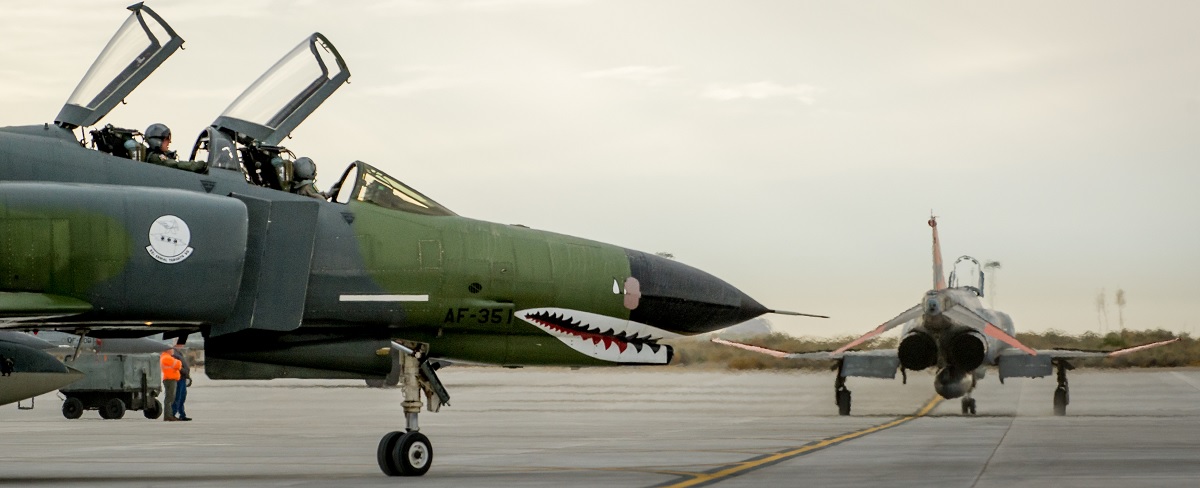
A surge of emotion washes over Jim Harkins as he slipped his fingertips across the edges of the wings and walked from nose to tail, scrutinizing every detail of the jet.
His weathered features appear calm and determined, but the tears he is pushing back are hidden beneath them.
He greets each maintainer and says, “Thank you,” as he moves around the aircraft. Harkins rubs and taps the QF-4 Phantom II’s bulbous nose, like an old cowboy greeting a faithful stallion, before climbing into the cockpit.
Harkins murmurs, “One final time,” as the canopy closes around him.

This is a day of lasts for Harkins and the F-4. It will be Harkins’ final flight with the Air Force, as well as the Phantom’s final flight. It’s the last flight they’ll ever take.
“It’s not really sad, because in the military you get used to a lot of lasts, but it’s humbling,” Harkins said.
Harkins isn’t the only one who has nostalgic feelings for the plane known lovingly as “Old Smokey.” Hundreds of “Phantom Phixers,” “Phantom Phliers,” and “Phantom Phanatics” congregated on the Holloman Air Force Base flightline to observe the final F-4 flight.
Some used to work on the plane, some are just admirers, and some, like retired Col. Chuck DeBellevue, have actually flown the plane.
DeBellevue flew the F-4 in Vietnam, where he had the most confirmed kills of any American aviator throughout the conflict, with two against the Mikoyan-Gurevich MiG-19 and four against the MiG-21. He’s not only bidding farewell to an incredible machine; he’s also said farewell to an old buddy.
“A friend who got me home more times than I care to remember,” DeBellevue said. “Being back on the flightline today brought back a lot of memories, not all are good. I lost a lot of friends, but it was a great airplane. I loved to fly that airplane. It’s very honest and it got me out of a lot of tight spots during the war.”
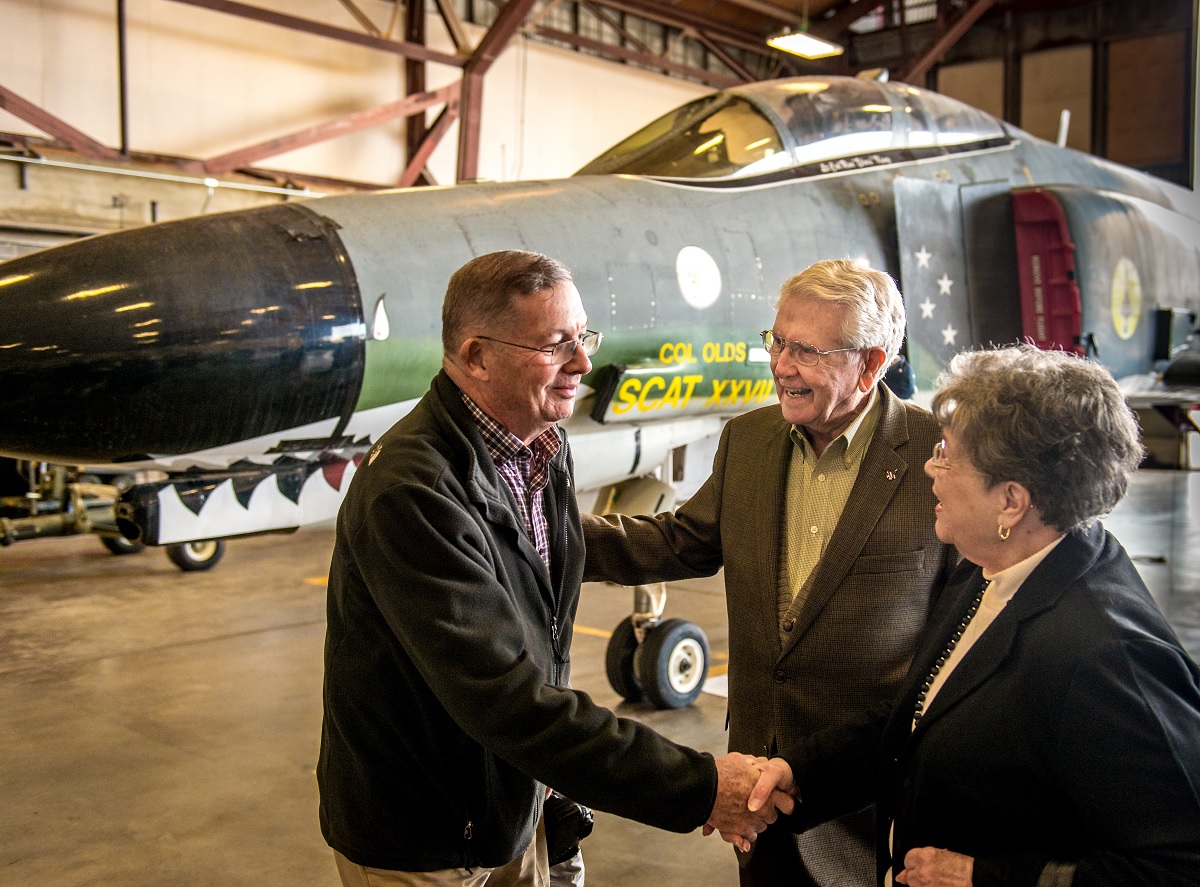
According to DeBellevue, the F-4 was initially purchased by the Navy as a fleet interceptor, and the Air Force purchased it in 1963 to do everything – and it accomplished everything. It served as the Navy’s and Air Force’s primary air superiority fighters, as well as ground-attack and aerial reconnaissance missions. It was renamed the QF-4 after being retired from active duty and flown as aerial targets.
Throughout the 1990s, the F-4 served as the Air Force’s workhorse weapons system, and it still has the distinction of being the first multi-service aircraft. The F-4 set 16 speed and altitude records during its peak, and it proved its worth time and time again over its long lifetime.
“You didn’t get into the F-4, you put it on, it became you,” DeBellevue said. “It was a manual airplane, not like an F-16 or F-15, they were aerodynamic and designed well. The F-4 was the last plane that looked like it was made to kill somebody. It was a beast. It could go through a flock of birds and kick out barbeque from the back.”

The final flight of four F-4s prepared to take off for the last time on the flightline at Holloman. The engines roar, and smoke billows in the air.
Harkins, dancing in the cockpit, looks out over the audience, revving up the onlookers and applauding those in attendance. As the final four F-4s take off on their final taxi, everyone cheers.
Pilots Eric “Rock” Vold, Jim “Boomer” Schreiner, and Lt. Col. Ronald “Elvis” King, the last active duty F-4 pilot, and leader of Det. 1, 82nd Aerial Targets Squadron (ATS), are the first to pass through the crowd. Before King formally retires from the QF-4 program during a ceremony following the flight, these men will fly the Phinal Phlight demonstration together.
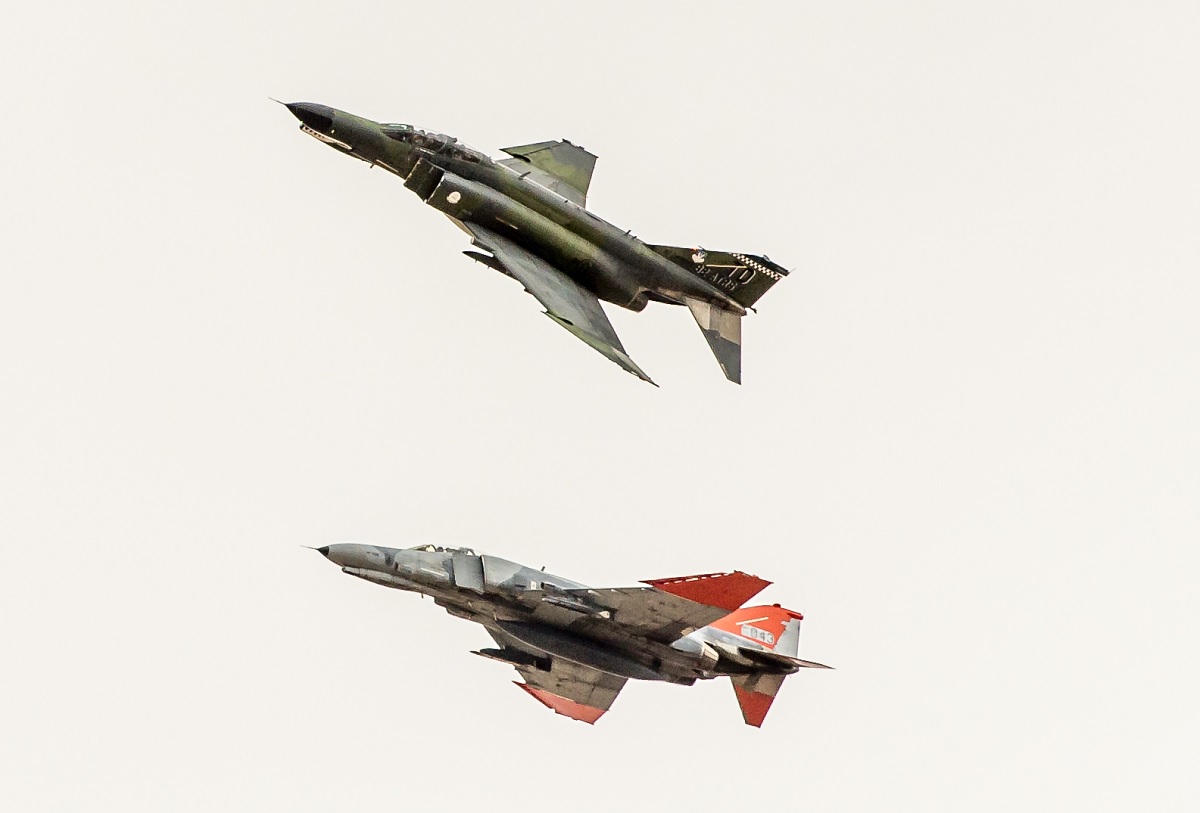
“I don’t want to sound cheesy, but every time I get into the F-4 I can’t help but think of all the stories of all the pilots and all the maintainers who made this aircraft great,” King said. “The history and the heritage to me is the biggest satisfaction of flying the airplane.”
When King became the squadron commander, he had no idea he would be the last active-duty pilot. It didn’t hit him until last year when he and Harkins began taking the F-4 on a farewell tour to air shows and aviation expos. King felt compelled to take the F-4 on the road one last time, giving fans the opportunity to view, touch, and tell their tales about it. It was then that he knew that flying the F-4 would be a once-in-a-lifetime experience.
“It’s going to be sad to shut those engines down for the last time, but she’s served our country well,” King said of the F-4. “It’s exciting too, because our mission is to provide full-scale aerial targets and we are going to be able to do that now with an airplane that’s better suited, provides higher performance, and is more representative of the threats we face today in the QF-16.”
According to King, keeping the F-4s in the air was becoming increasingly difficult, and the only reason the QF-4 lasted as long as it did was due to the 82nd ATS’s maintainers.
Unfortunately, he claims, the F-4 is no longer required. At Holloman, all remaining planes will be demilitarized and utilized as ground targets at the White Sands bombing range.
Most people don’t want to know about the remaining F-4s, which King understands, but maintaining them as a heritage pieces or preserving them for museums is too expensive.
“At the end of the day, the Air Force isn’t real sentimental,” King said. “It will have a warrior’s death.”
Engines roar and a cloud of dust and smoke warn the crowd that the final four F-4s are about to take off. In a two-ship formation, the first two aircraft, piloted by King and Schreiner, lift off. Harkins is in third place, and Vold is in fourth place. The final two planes rise freely, maintaining low to the ground in afterburner before pulling into a vertical climb towards the runway’s end.
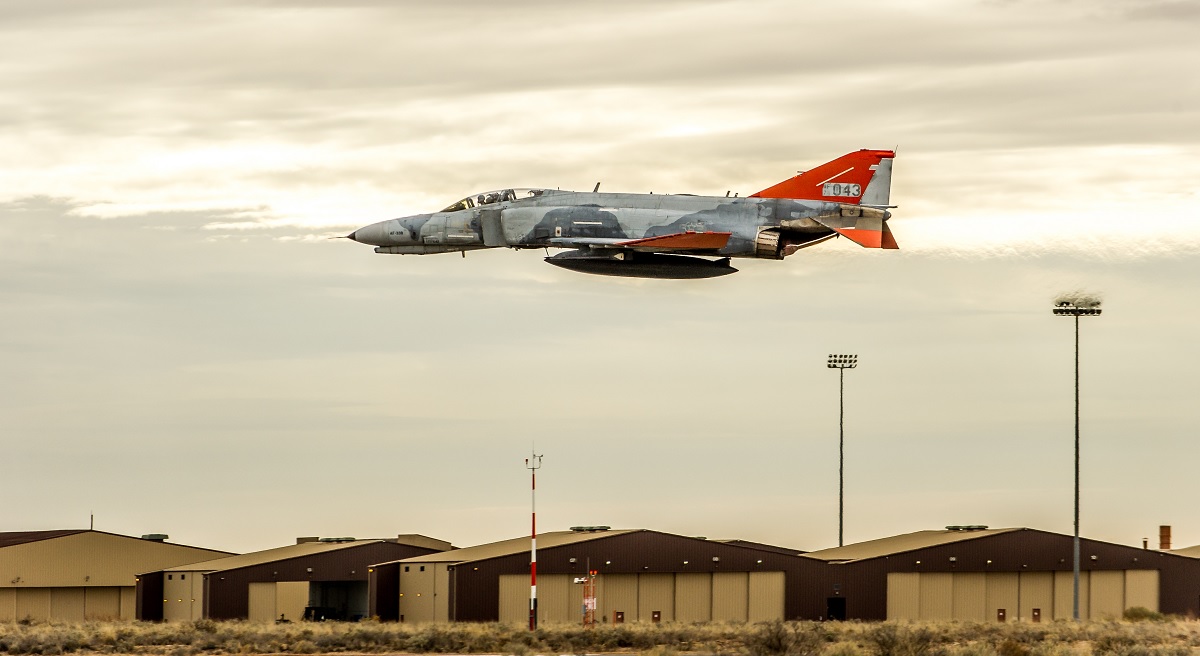
The crowd goes wild. The F-4 has a distinct sound. Harkins’ jet sounds like it’s shredding the sky as it flies over the crowd in a low-altitude maneuver.
Multiple passes are conducted over the gathering of hundreds in four-ship, two-ship, and stacked formations. The sound of camera shutters clicking furiously can be heard all the way down the asphalt.
The sky suddenly bursts wide, causing many booms to shake the ground, buildings, and cars, triggering alarms across the base. The F-4s are going supersonic high above, as indicated by the concussions.
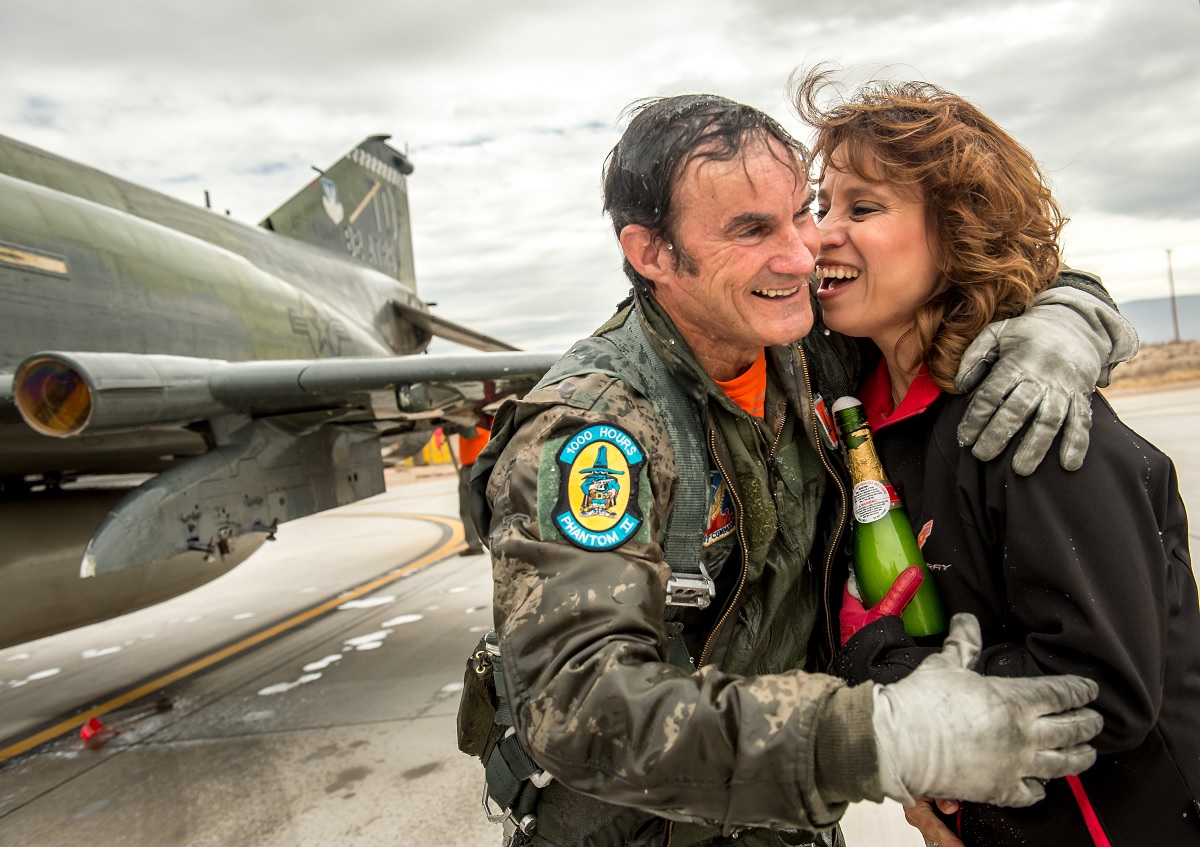
Harkins swoops down from the skies, passing many times over the throng before making his final approach. Harkins becomes the final pilot to fly 1,000 hours in the F-4 as his wheels touch down on the ground.
“I can’t imagine a better way to go out than with the F-4, it’s a special moment and a special jet and then… done,” Harkins said. “Although I flew F-16s and I went down to the F-4, but I consider myself going out on top.”
As he descends from his plane, he is drenched with water and sprinkled with champagne by his pals. King lands his F-4 in the distance, and with the front landing gear contacting the asphalt, the legacy of the airplane is written out of history books.
While the Phantom’s time in the sky may have come to an end, the stories about its escapades are far from ended. There’s always time for waxing poetic about the good ol’days, flying through the vast blue yonder on “Old Smokey” for those who flew the F-4.

Photo by J.M. Eddins Jr. / U.S. Air Force

